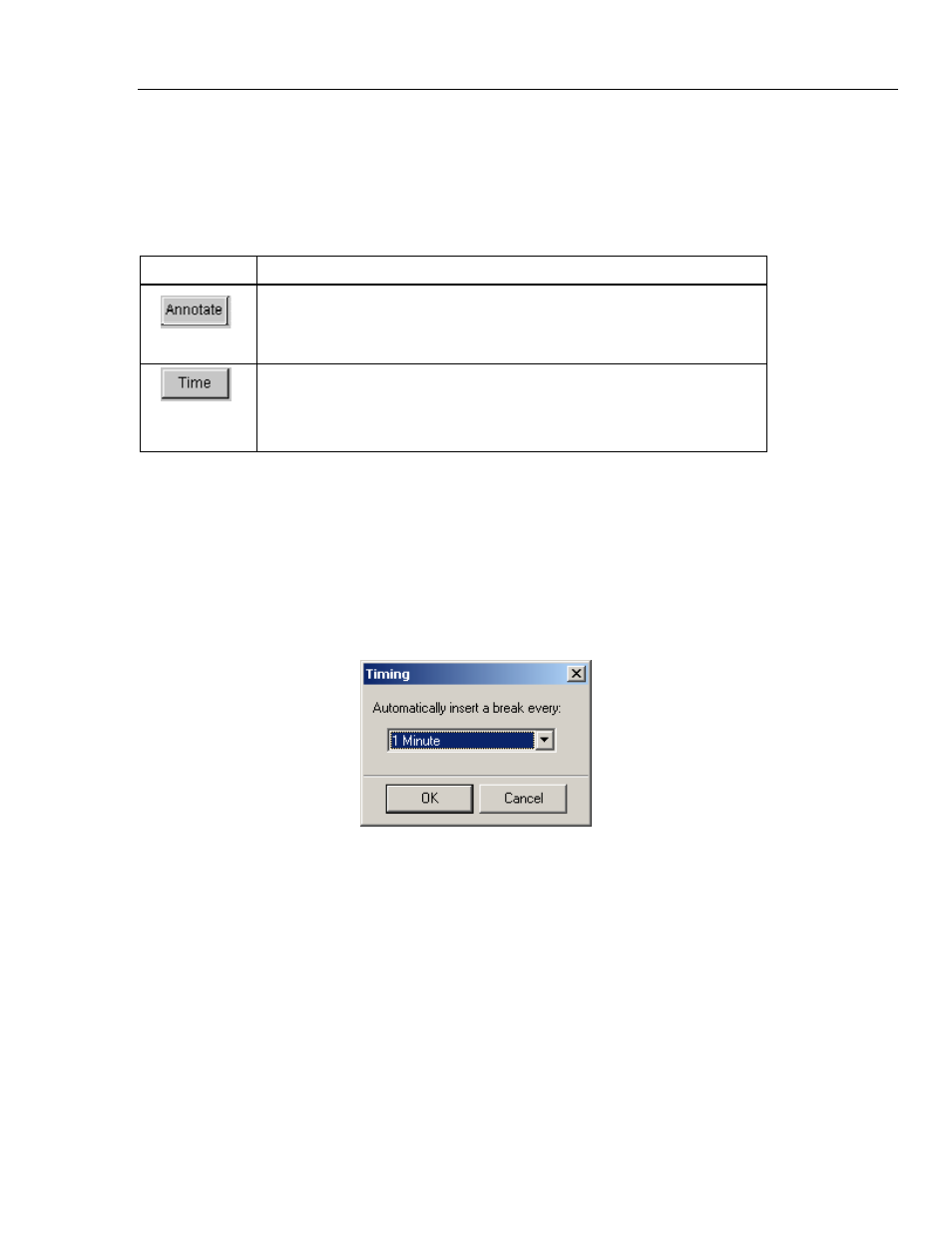Manual event markers, Automatic event markers – Fluke Biomedical VT Mobile User Manual
Page 85

Appendices
VT for Windows
A
A-19
Manual Event Markers
Event markers assist you during data collection. You can place two events into the file:
Annotate and Time. During file recording, these events appear in the Events section of
the File Controls panel. See Table A-4.
Table A-4. Event Markers
Button Description
Pressing this button during recording brings up a dialog box where you may
enter notes (text). Upon your pressing
OK
, the software places your notes and a
time stamp in the data file. Note that the time stamp is the time when you
pushed the
OK
button (not the
Annotate
button).
Pressing this button during recording places a time
stamp in the data file. A
dialog box appears showing the exact time written to the file.
One use of this function is to correlate data collection in a laboratory notebook or
data collection worksheet with the data in the file.
Automatic Event Markers
The software places automatic event markers in data files to assist in the Rewind and
Forward functions during playback. Rewind and Forward move the data file from event
to event. In the absence of user events (i.e. Time or Annotate), there would be beginning
and end of file events.
To set the time interval, select Timed Breaks from the File menu. This brings up the
dialog box shown in Figure A-23.
edg90s.bmp
Figure A-23. Timed Events Dialog Box
Use this setting to determine how often to place an automatic event marker in the data
file. Use event markers with the Forward and Reverse functions of the file playback.
Using the pull-down menu, select the desired time interval between automatic event
markers and then select OK. Shorter times allow you to see more of your data during
playback.
The software keeps a timer for the automatic event marker. If you insert an event by
using Time or Annotate, the timer resets. This is to avoid having automatic events too
close to user events.
